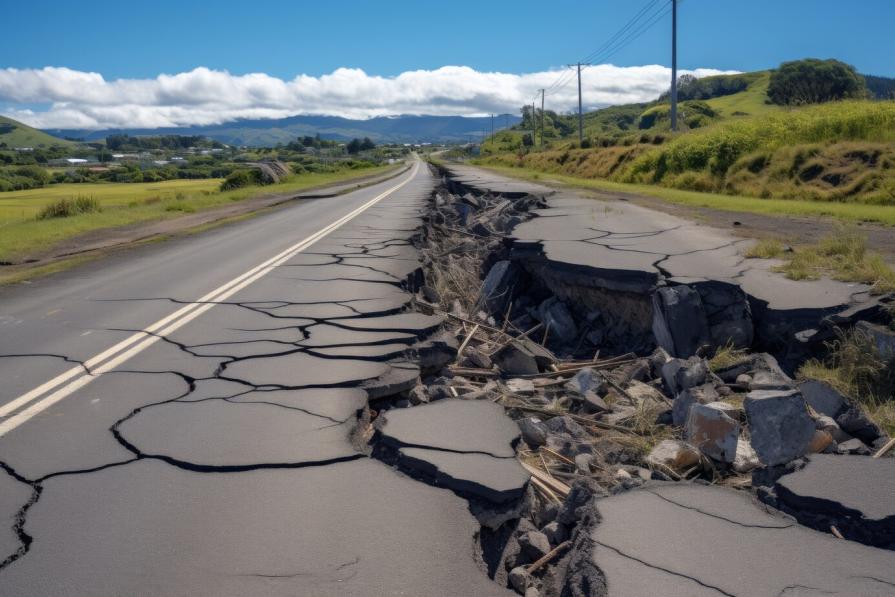In our today's material, we will make a brief overview of the most dangerous and impressive roads on Earth.
Cloud Road of Death
Bolivian Yungas Road does not tolerate the weak in spirit: even inveterate atheists and agnostics prefer to raise prayers to higher powers before stepping on this slippery and shaky path.
It was built in the early 1930s during the Paraguayan-Bolivian conflict over copper deposits. The goal is simple – the transfer of troops.
Today, as 90 years ago, Yungas Road is a narrow path, pressing against the rock spurs, wrigtling like a snake, sometimes no more than three and a half meters wide. Despite this, the route is in active operation: bus and cargo routes pass along it.
Every year there are up to several hundred accidents, and 25-30 people fly off the cliff into the abyss. If a collision occurs and cars cannot leave the place on their own, they are also overturned into the abyss, since usually the road is not wide enough to raise the car to the tow truck. Along the route there are 489 commemorative crosses with 920 names of the dead - but this is only a part of the known victims. There is no other route in this region. An additional contribution is made by the fact that Paraguayans are damn bad at driving.
Among extremals, it is considered a special chic to drive Yungas Road without loss on a motorcycle or car.
Road in Nepal

Karnali highway in Nepal is a mountain serpentine record length of 257 kilometers without fences. 231 kilometers are also devoid of lighting and markings, and in general, the sinking of the route can radically change due to landslide activity or rockfalls.
Every year, up to 60 people die here. The average width of the passage is up to 2.5 meters, in some places it narrows to two; paradoxically, every day there are hundreds of cars - the road is classified as a two-way highway. The authorities would gladly close the route with the ends, but this will put 37 mountain villages with a total population of more than five thousand people on the verge of extinction.
Atlantic Road in Norway
Picturesque and deadly, this road, winding among the rocks, connects several dozen islands. In a number of areas it resembles a slide in a water park. Equipped with the latest technology, perfectly illuminated and equipped with metal fences, which does not save from periodically flooding all the waves that make the coupling with the road purely symbolic. An additional element that brings freshness in the relationship between motorists and the road is freezing rains. Therefore, no matter how beautiful the surroundings would be, you should not look at them along the way. Tourists like the road, however.
Afghan Road

Those who served in the limited military contingent of Soviet troops in Afghanistan remember the road from Jalalabad to the capital Kabul. It is 60 kilometers of sharp turns, tunnels with a needle eye and sharp cliffs. Such a road can disorient even a very highly qualified driver.
Every day there are accidents - the rules of most Afghans prefer sober calculation, ingenuity and luck, so the movement is very chaotic. The sharpness is added by the terrorist acts that periodically occur here. The authorities are not able to resolve the situation and are just watching.
Bone path in Kolyma
This kind of highway the lion's share of the year is covered with an ice crust, sometimes devoid of fences, but it is replete with steep sections, passes through a mountainous edge with steep climbs and dips.
This road rightfully occupies a place in the same all-Russian rating and can compete with the Caucasian serpentine for the title of the most extreme route in the country. In particular, this applies to the ancient Oimyakon segment of the road: the authorities specifically make a reservation that the use of this road is a matter of choice, drivers do it at their own risk.
It is called Kostyany not only because drivers often die here: it was laid by political prisoners of the Gulag, and the mortality rate often reached 70%.
Incredible tunnel

The Guolyan Tunnel is an unforgettable structure that is unparalleled. It is located on a road connecting main China with an isolated area among the mountain ranges - quite densely populated, and is a series of engineering structures both in the rock and on bridges. Often the road makes sharp turns at right angles. There are no fences on the open parts, at the bottom - two thousand meters of emptiness and picturesque mountain rivers.
Traffic is very active: this is the only road. It is very popular with tourists: the authorities even made special panoramic windows in the walls of the tunnel, allowing you to view the valley from a huge height.
During the year on the road there are from 50 to 120 emergency situations that entail the death of a person. In particular, it is dangerous during rains, since the alternation of wet from rain and dry fragments of the road in conditions of zero visibility is the first reason to go to the next world.
Indian snake
During the time of the Mughals, several roads were built in the mountains of northern Hindustan, which served for the transfer of troops and internal trade. Zoji La is one of them. High-altitude - the average height exceeds three thousand meters - for the time that has passed since the construction, has never been repaired, since the cost is comparable to the construction of a five-hundred-meter skyscraper.
A local dobrohot on a bicycle is engaged in pit repair with the help of cement, but at the current pace, the passage of the entire "route" will take him more than two thousand years.
French beauty

The Goan passage is traced along the seabed and runs at a depth of up to four meters, connecting mainland France with a small island (there is a picturesque monastery and a medieval castle in one). At low tide, you can drive along the road, it is slightly shown on the shoals (but does not protrude from the water). This happens twice a day, a total of four hours. "Navigation" is short, so they usually go on the "descending" water. The length of the road is four kilometers. Driving on the water, splattering water around you, is incredibly beautiful, but risky.
In case the tide catches you by surprise, there are special turrets for people to sit out, but cars have nowhere to go.
Extreme in Yukon style
The Dalton Highway in Alaska first served gold prospectors and prospectors, and then became a link between the interior and the coast.
An ice road leads to the largest field in the region along a branch of the oil and gas pipeline. Around - ice silence, completely devoid of infrastructure.










